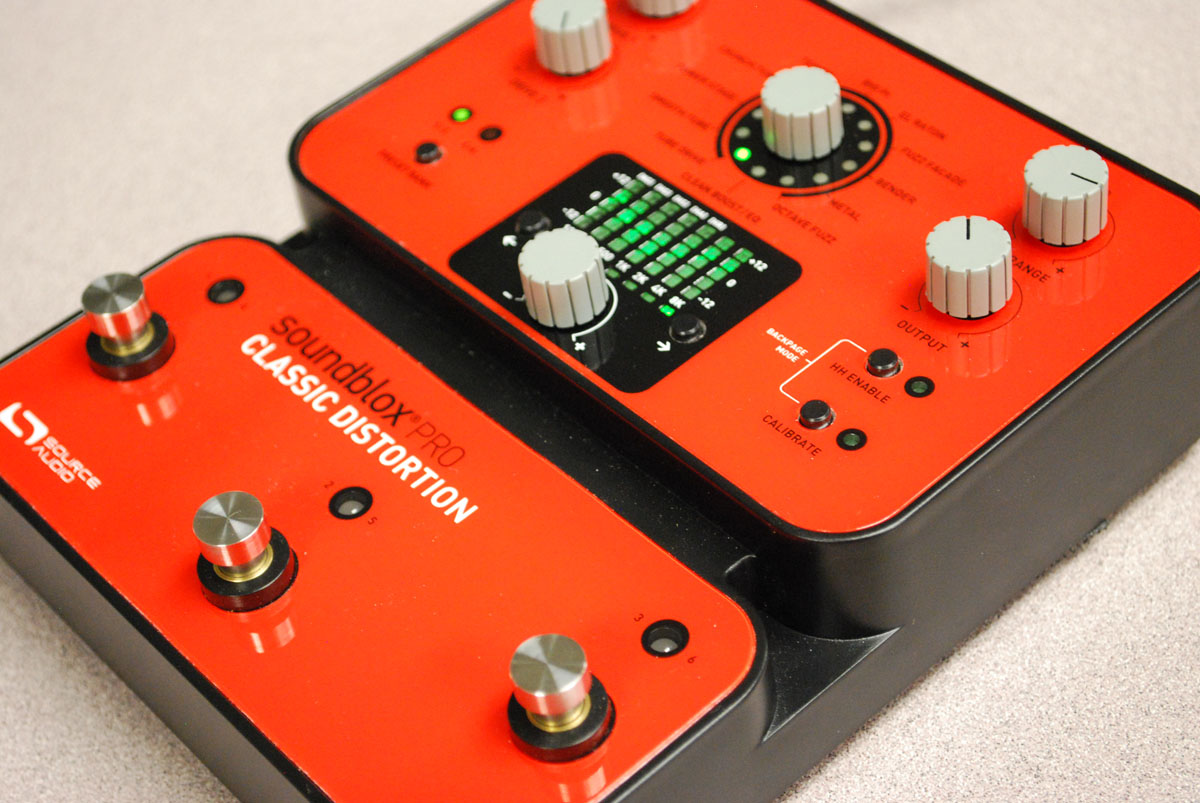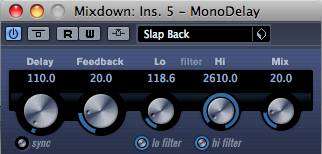I discovered the Soundblox Pro Classic Distortion by Source Audio on I Heart Guitar a few days ago and I loved the concept so much that I thought I should post about it.
Source Audio is a little company formed by former Analog Devices VP of of Engineering Jesse Remignanti and Kurzweil Senior Engineer Bob Chidlaw. After spending 5 years scrutinising every distortion pedal on the planet, they have come up with the “Soundblox Pro Classic Distortion” pedal which aims at digitally recreating the tones of well known pedals such as the Electro Harmonix Big Muff, the Fulltone Distortion Pro, the Proco RAT, the Ibanez Tube Screamer, the Fuzz Face, etc. There are 12 models in total.
I know what you are thinking: “this has been done before”. Yes there has been a few attempts but the Soundblox Pro Classic Distortion could very well set a new standard due to its tonal qualities and unique features.
First of all, it sports a 7 band equalizer whose settings can be stored with each of your 6 presets. I think this is a pretty neat idea and frankly, I don’t know why most distortion pedals stop at 3 or 4 bands. Secondly, using an external expression pedal, it is possible to morph between 2 distortion models and get a huge number of variations. I am not just talking about mixing the tones of two pedals here, what happens is more a “fusion” in the digital domain between two models, creating entirely new “hybrids”. So what should a RAT morphing into a Big Muff be called? A Big Ruff? Third, the Soundblox Classic Distortion has a MIDI input allowing it to integrate with complex rigs and be remotely controlled. And last but not least, it looks like a hot rodded space ship from outer space which is always a bonus.
Here is Earl Slick (of David Bowie’s band) trying out the Soundblox Pro Classic Distortion and getting some sweet tones out of it:
The Classic Distortion is not the only pedal in the Soundblox Pro range at Source Audio, you will also find another model aimed at creating more “modern” tones called the Soundblox Pro Multiwave Distortion (which also exists for bass). And let’s not forget the “Hot Hand” series of products such as the Phaser/Flanger where you can control the amount of wobbling by shaking your hand (using a special ring, take a look at the video). And the good news is that the hot hand ring can also be used to control the Soundblox Pro Classic Distortion.
I think it is pretty cool to see some innovation in modeling !


